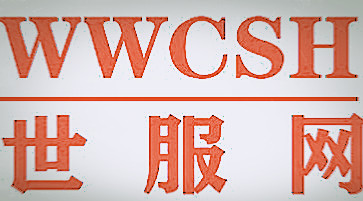US $300 Billion Tax Increase Hits Us Announcement List And Public Review Procedure
In May 13th, the office of the United States Trade Representative (USTR) issued a formal announcement announcing the launching of a public review process for the 25% Tariff Scheme of 300 billion China's export products (Listing 4).
According to this procedure, the stakeholder can search the file number USTR-2019-0004 on https://www.regulations.gov/. After entering the page, they can submit written opinions or apply for a hearing.
June 10th is the deadline to apply for hearing and submit a summary of the speech. In June 17th, the deadline for submitting written comments is heard. The United States will hold a hearing in June 17th, and the number of hearings is uncertain.
The seven day after the hearing is the deadline for submitting written comments after the hearing.
According to the Business Council, the 300 billion product tax code is complementary to the 200 billion product (10% in September 24, 32018 and 25% in May 10, 2019), including almost all clothing products and some textiles.
Combined with the two list, almost all textile and clothing products exported to the United States are related to China (which is specifically related to the Chinese customs tariff number).
All kinds of products including China's largest export clothing and clothing accessories (customs code 61 and 62 chapters) are included.
It is worth noting that the 26 categories of products excluded from the 200 billion tax list were added to the tax plan.
The United States intends to list the tax products. Please click the link below to get https://pan.baidu.com/s/10NsF3r6-SJdtsdUUaG2bGg (extract code qzri).
Members are reminded that participating in the US public review process is the only way to exclude products from the tax collection before the implementation of the formal tax measures.
In the 200 billion product tax plan, the chamber of Commerce passed the public appraisal process successfully to help some enterprises to exclude related products.
Although some of the products have been included in the current list, the tax period has been delayed for nearly 1 years.
Up to now, the US has not yet opened the 200 billion product product exclusion channel.
The public appraisal stage before the implementation of the tax plan is very important for enterprises wishing to be excluded.
Relevant enterprises, trade organizations and even individuals can apply to participate in the procedure.
According to the experience of the chamber of Commerce, the enterprises can discuss with the importers as soon as possible, and the American importers and purchasers will have better results.
In the comments, whether the import of Chinese products has the possibility of an alternative supply in the United States or third countries, the effect of tariffs on the product or the interests of the United States and whether the product is related to "made in China 2025" or other Chinese industrial plans can be restated.
For this tax plan, the chamber of Commerce will immediately carry out tax analysis, data collation and local research.
All enterprises have any problems, please contact us in time.
- Related reading

Commodity Futures, Ice And Fire Days: Cotton Plummeted And Red Dates Are Rising.
|
"2018 Chinese E-Commerce Listed Company Data Report" Published In 2018 (PPT)
|- neust fashion | Short Jacket + Tight Pants Show High Winter Wear Just Fine.
- Fashion posters | Winter Jacket With Dress, Elegant And Feminine Is Indispensable.
- Star wardrobe | Xue Xiu Wears A White Coat. The Original Temperament Can Be So Outstanding.
- NOTICE | Pay Attention To Ren Ao Technology Public Number Can Also Make Money Do Not Believe You Try.
- Professional market | Chemical Fiber Textile Raw Material Industry Needs New Blood.
- Standard quality | GAP'S Many Batches Of Garments Are Unqualified Due To Fiber Content.
- Leadership Forum | Zhang Yong Talked About The Trend Of Combination Of Internet And Commerce
- quotations analysis | Polyester Staple Market Consolidation And Wait-And-See Atmosphere
- Market topics | Domestic Cotton Spot Market Is Weak And Scarce.
- Fashion item | Woolen Coats And Classic Clothes Make You Look Beautiful And Thin.
- What Is The Charm Of Ouyang And Nana'S Favorite Canvas Shoes?
- Sino US Trade Frictions Escalate In US Cotton Stocks: Cotton Price Is A Dead End.
- Zheng Cotton Fell 1390 Yuan On The 2 Day, The Market Participants Interpreted The Logic Behind The Continuous Limit.
- Bad Mood Spreads PTA Or Hard To Be Independent.
- Sino ROC Textile Industry Reached Agreement To Build Bilateral Cooperation Bridge
- China Has Imposed Tariffs On These 781 Categories Of Textiles And Garments Imported From The United States, And Often Spends More Money On Sea Purchases.
- Invest 8 Billion 240 Million Yuan, 208 Major Projects, Pingnan Eco Textile Garden Estimated Annual Output Value Of 10 Billion
- Who Can Honor The Chinese "Local" Clothing Brand?
- A Ring Out Of His Own Half KOL Little Red Book What Do You Want To Do?
- Bvlgari Satchel Is Good For 520 Valentine'S Day!

